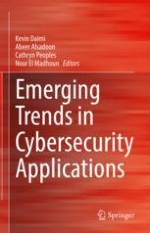2023 | OriginalPaper | Chapter
Non-stationary Watermark-Based Attack Detection to Protect Cyber-Physical Control Systems
Authors : Jose Rubio-Hernan, Luca De Cicco, Joaquin Garcia-Alfaro
Published in: Emerging Trends in Cybersecurity Applications
Publisher: Springer International Publishing
Activate our intelligent search to find suitable subject content or patents.
Select sections of text to find matching patents with Artificial Intelligence. powered by
Select sections of text to find additional relevant content using AI-assisted search. powered by
